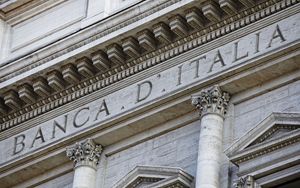(Finance) – The Bank of Italy publishes today “The impact of energy and climate shocks on credit risk”, the new issue of the series “Markets, infrastructures, payment systems”.
The work – explains Palazzo Koch – applies a new methodology to estimate the effects of an increase in energy spending on the credit risk of Italian companies, measured by the probability of insolvency in 12 months (PD).
In detail, we hypothesize the introduction of different levels of carbon tax and, consequently: we stress energy prices; we reestimate businesses’ energy demand; we evaluate the effects on the probability of insolvency of companies through the recalculation of the company balance sheet. The flexibility of the approach, which includes the analysis of scope 2 emissions, allows us to evaluate in detail the channel for transmitting energy shocks and the contextual exposure of companies.
“Our results show that the introduction of a carbon tax would have moderate effects on credit risk on average: a carbon tax of EUR 40, EUR 90 and EUR 140 per tonne of CO2 would increase the average default probability by 0.6, 2.3, and 4.1 basis points, respectively. The effect is slightly greater for the agriculture and services sectorswhile no clear effects are found considering company size.
“The climate change – we read – represents a threat to economic activity through various channels, for example, due to reduced labor and energy productivity; even some extreme weather events have had a short-term negative effect on economic growth (IPCC, 2022). There threat the largest concerns the sectors most exposed to the climate, such as agriculture, forestry, fishing, energy and tourism. Climate change also impacts financial institutions (de Guindos, 2021). The risks to the stability of the financial system will also depend on climate policies and the exposure of different sectors of the economy to such policies.”
“The effects of climate change they can spread to the financial sector in several ways. Natural disasters, through the interruption of the activity of businesses and families, increasing their financial vulnerability, with loan repayments becoming more complex. This could lead banks to limit the supply of credit, a move that could affect the effectiveness of the credit channel of monetary policy. If these effects occurred on a large scalecould threaten the financial stability of the system as a whole (Faiella and Malvolti, 2020)”.
